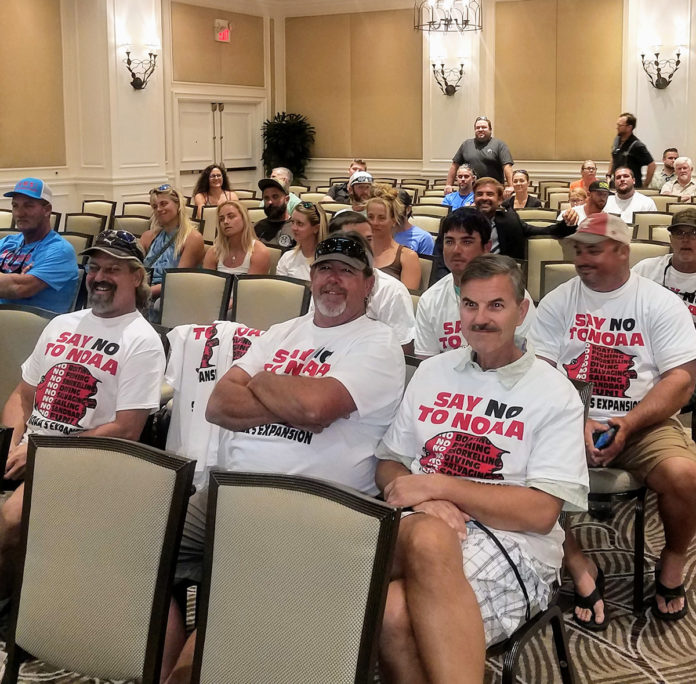
Maritime professionals in the Lower Keys were nearly unanimous Tuesday in their opposition to new rules being proposed for the Florida Keys Marine Sanctuary. Fifty-nine of 60 speakers, many wearing “Say No to NOAA” shirts, opposed the changes, while some suggested other potential ways to protect the Keys’ most vital natural resource.
Sanctuary officials, supporters and volunteer Sanctuary Advisory Council members representing various marine industries, user groups and the Keys community listened to more than three hours of comments from 60 captains, divers, fishermen, dolphin watchers and backcountry operators during a public input forum from 1:30 to 8 p.m. Oct. 15 at the Key West Marriott Beachside Hotel.
The forum was the latest in a series of public outreach meetings taking place throughout the Keys and South Florida while sanctuary officials introduce a new management plan that includes proposals for tighter restrictions and more limited access to certain areas of the surrounding marine sanctuary.
The forum started with the members of the panel introducing themselves and outlining their thoughts about the comprehensive management plan, which sanctuary managers have named Restoration Blueprint.
“This is a huge project and it pisses people off, but I don’t think now is the time to stop talking to each other,” said SAC member Joe Weatherby, a boat captain, diver and artificial reef advocate. “When the Restoration Blueprint came out, I was disappointed to see nothing about water quality. We should, at the very least, be testing our water. I’ve been assured we will see these recommendations evolve, so I urge you to at least stay in this discussion and let’s at least talk about a better way.”
While many of the speakers and other panel members echoed Weatherby’s water quality concerns, most community members were outspoken in opposing any changes that would affect their livelihoods and lifestyle.
And while many speakers expressed concern about changes to popular recreational areas such as Snipe Point and Marvin Key, the sanctuary emphasized in an informational brochure that, “NOAA is not proposing to limit access to backcountry shallows and sandbars where there is historical recreational use, such as at Snipe Point and Marvin Key.”
In addition to water quality monitoring requests to measure runoff from Florida Bay and the Everglades, the most commonly heard comments included requests for increased enforcement of existing rules before enacting new rules, new mooring balls and channel markers throughout the sanctuary.
Attorney David Paul Horan and several others warned officials that limiting access to one area of the sanctuary will simply move users to other areas.
“It’s the death of common sense to think that closing our most popular recreational areas will not overpopulate other areas. … And once the government takes ‘it’ away, away, they never return ‘it’ to us.”




















